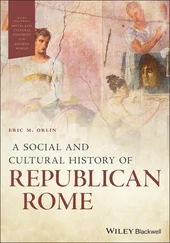Steve Finbow
GRAVE DESIRE
A CULTURAL HISTORY OF NECROPHILIA

Cesare Lombroso—the godfather of criminal anthropology—cites the case of a 40-one-year-old male named Gruyo who lived in Vittoria, Spain. Outwardly, a normal man, married three times, having no previous trouble with the law, Gruyo, over a ten-year period, strangled six women, the majority of them prostitutes. He raped some but mutilated all, severing their intestines and kidneys, pulling the organs out through the vagina. [1] Richard von Krafft-Ebing, Psychopathia Sexualis, trans. Franklin S. Klaf (New York, 1998), p. 65.
This pre-Ripper perversity, fetishizing the corpse, the body without organs, the organs without body, a sex object devoid of all resemblance to socio-sexual ‘norms,’ to embedded objects of desire, transmutes the flesh, the bones, the viscera into a sex tool, a mute assemblage of apertures and sites of multiple ingress—a chaos of new vaginas, a variation of mouths, an accretion of anuses. ‘In the desiring-machine, one sees the same catatonic inspired by the immobile motor that forces him to put aside his organs, to different parts of the machine, different and co-existing, different in their very coexistence. Hence it is absurd to speak of a death desire that would presumably be in qualitative opposition to the life desires. Death is not desired, there is only death that desires, by virtue of the body without organs or the immobile motor, and there is also life that desires, by virtue of the working organs.’ [2] Gilles Deleuze & Félix Guattari, Anti-Oedipus: Capitalism and Schizophrenia, trans. Robert Hurley, Mark Seem, and Helen R. Lane (London, 2004), p. 329.
Born in 1872, Victor Ardisson came from a long line of psychotic criminals. A feeble-minded boy, Ardisson became addicted to masturbation and the consumption of his own semen: ‘It would be a pity to lose it,’ he said. Local girls spurned his sexual advances. He had a predilection for cunnilingus, liked to suck breasts, and enjoyed licking urine from toilet seats. As he matured, his fetishes grew darker, more extreme. He worked as a stonemason, a gravedigger, and had a spell in the army, deserting on a number of occasions before returning to civilian life. Age was not an obstacle to Addison’s desires and compulsions; he disinterred females aged between three and sixty. He sucked the dead bodies’ breasts, went down on the corpses; he rarely had vaginal or anal intercourse with the cadavers, nor did he commit acts of mutilation. After a lull in his necrophiliac activities, he watched the funeral of a 17-year-old large-breasted woman in the local cemetery in which he worked. Ardisson exhumed the girl’s body, sucked the breasts and performed cunnilingus. His necrophilia out of control, he took for his ‘bride’ the head of a dead woman. Villagers reported the stench emanating from what turned out to be the decomposing body of a long-dead three-year-old girl; his taste for dead flesh had developed into a sexual desire for the putrescent. After arrest and trial, he enjoyed his time in prison; his favourite meals were cats and rats. Ardisson, a textbook psychopath, felt no remorse, showed no emotional response for his acts. [3] Psychopathia Sexualis, p. 68.
‘Eros and Thanatos are distinguished in that Eros must be repeated, can be lived only through repetition, whereas Thanatos (as transcendental principle) is that which gives repetition to Eros, that which submits Eros to repetition.’ [4] Gilles Deleuze, Difference and Repetition, trans. Paul Patton (London, 1994), p. 20.
Repetition and acceleration, a desire for a corpse as lover, as thing, as tool, an object of love without any chance of reciprocation, without hope of propagation. ‘[L]ove can be oriented toward its own limit, its own margin: it repeats its own ending. A new love follows, so that each love is serial, so that there is a series of loves. But once again, “beyond” lies the ultimate, at the point where the assemblage changes, where the assemblage of love is superseded by an artistic assemblage.’ [5] Gilles Deleuze and Félix Guattari, A Thousand Plateaus: Capitalism and schizophrenia, trans. Brian Massumi, (Minneapolis, 1987), p. 439.
In Jörg Buttgereit’s 1987 film Nekromantik, a woman squats in the grass urinating. The car she is travelling in with her husband crashes and the film’s hero—Robert Schmadtke—arrives with his co-workers from Joe’s Street-Cleaning Agency to cut the man from the car, bag the woman’s viscera, and take the bodies back to the morgue. Robert brings body parts home with him, which he places in pickling jars on a shelf. His girlfriend Betty bathes in blood while Robert watches a television programme on phobias. He fantasizes about the killing of a rabbit, the blow to its head, the knife across its throat, its death kicks. The rabbit is skinned, its eyes excised, its intestines and organ tree removed, then its sexual organs are severed from its body. An unseen man ties the rabbit to a piece of wood, a reverse crucifixion and evisceration. Concurrently, Robert imagines himself operating on a corpse, pulling strips of intestines and other matter from it and placing the offal-like body parts in trays and bloody kidney dishes. These two imagined scenes have Roman Polanski’s Repulsion (1965) and David Lynch’s Eraserhead (1977) as their inspiration, a re-imagining of psychological effects and surreal imagery if not pure horror and humour. A man collects apples in an orchard, another man shoots him and then wheels the body away, hiding it in undergrowth. A few months pass, and the cleaning agency are called. Robert steals the body and takes it home where he and his girlfriend Betty caress the putrid corpse, its skin grey and liquefying, its organs protrusive and decaying, its eyes a gelid mess. Betty seems the more excited of the necrophiles, Robert—to begin with—content to watch her, the necrophiliac arousal intensified by scopophilia. The young couple saw off a chair leg, insert it into the decayed genital area of the corpse, roll a condom onto the phallic thrust of wood. Betty undresses and impales herself on the simulated penis. Robert caresses her as she rides and kisses the dead man. As the thanatic threesome move towards climax, in a Bataillean moment, Robert sucks the corpse’s eye into his mouth and rolls it around with his tongue, Betty also tastes the eye as it falls from its socket. After Robert loses his job and therefore is no longer able to supply corpses, Betty leaves with the dead body. Angry, Robert sets fire to a photograph of her and kills their cat. Robert pretends he is a corpse, submerged in cold water in the bath, the dead cat’s blood turning it red. Death obsesses him—he eats a part of the cat’s organs, watches as the moon turns into a skull; he dreams of being dead and playing catch with a head that turns into a piece of meat. In a cemetery, he has unsuccessful sex with a prostitute. He cannot become aroused until he kills her and then fucks her on a gravestone. Discovered by a gravedigger the next morning lying next to the woman’s corpse, Robert decapitates the man and watches him die bleeding and twitching. Robert, now in necrophiliac rapture—and in filmic symmetry to the rabbit scene—nails a figure of Christ to a cross; then, in an autoerotic act of necrophilia stabs himself with a large knife, fucking himself with the blade; his cock shooting out jizz as the blade goes in and out. The film of the rabbit, played in rewind, dresses the corpse in its own skin, re-inserts the viscera, bringing the creature alive. He feels inside his own wound and blood spurts from his cock. In the last scene, we see Robert’s name on a tombstone and someone wearing woman’s slippers digging into the earth with a shovel. Nekromantik portrays many levels of necrophilia and the lengths people will go to to fulfil their desires—putrescence, body stealing, rape, voyeurism, and murder among them.
Читать дальше













